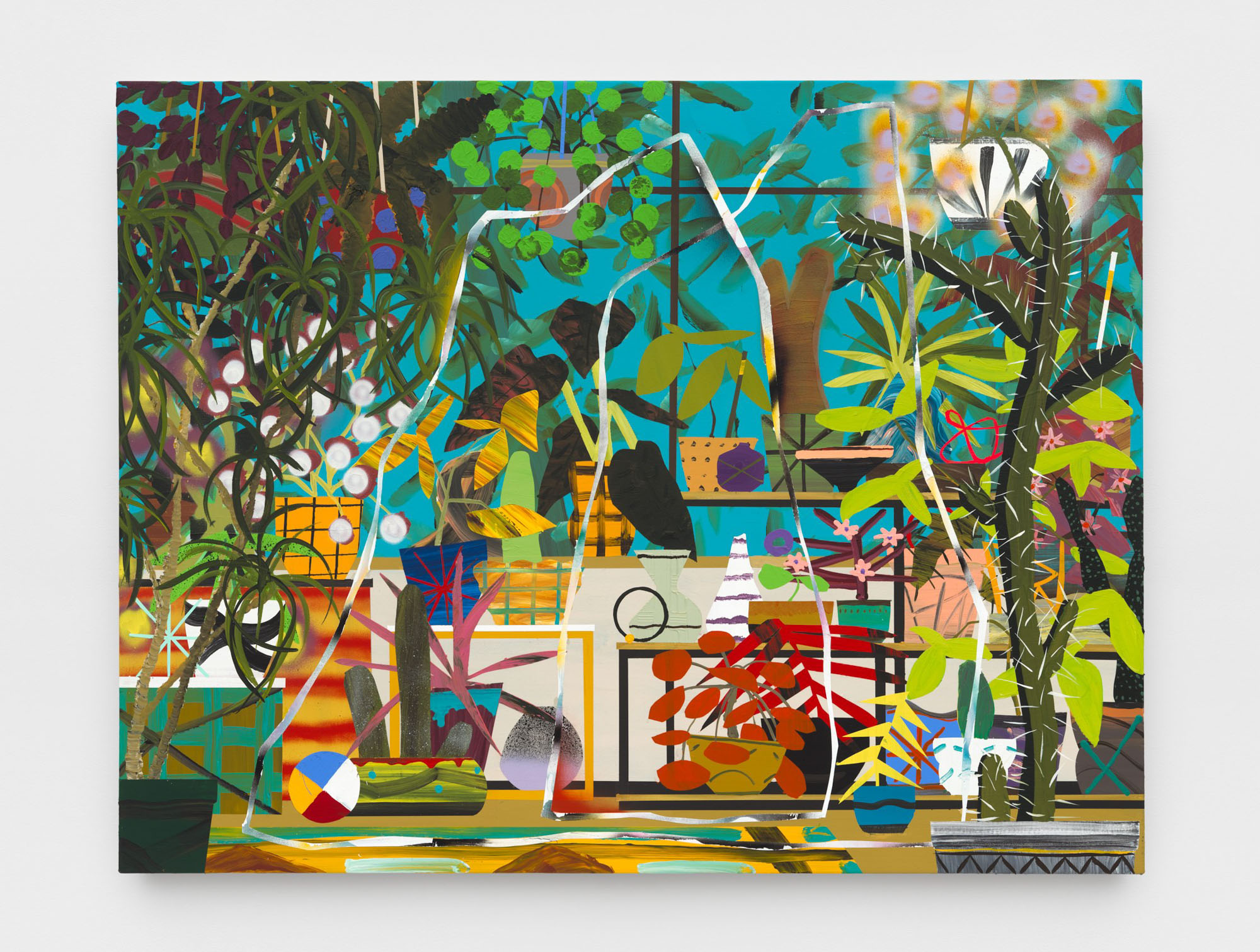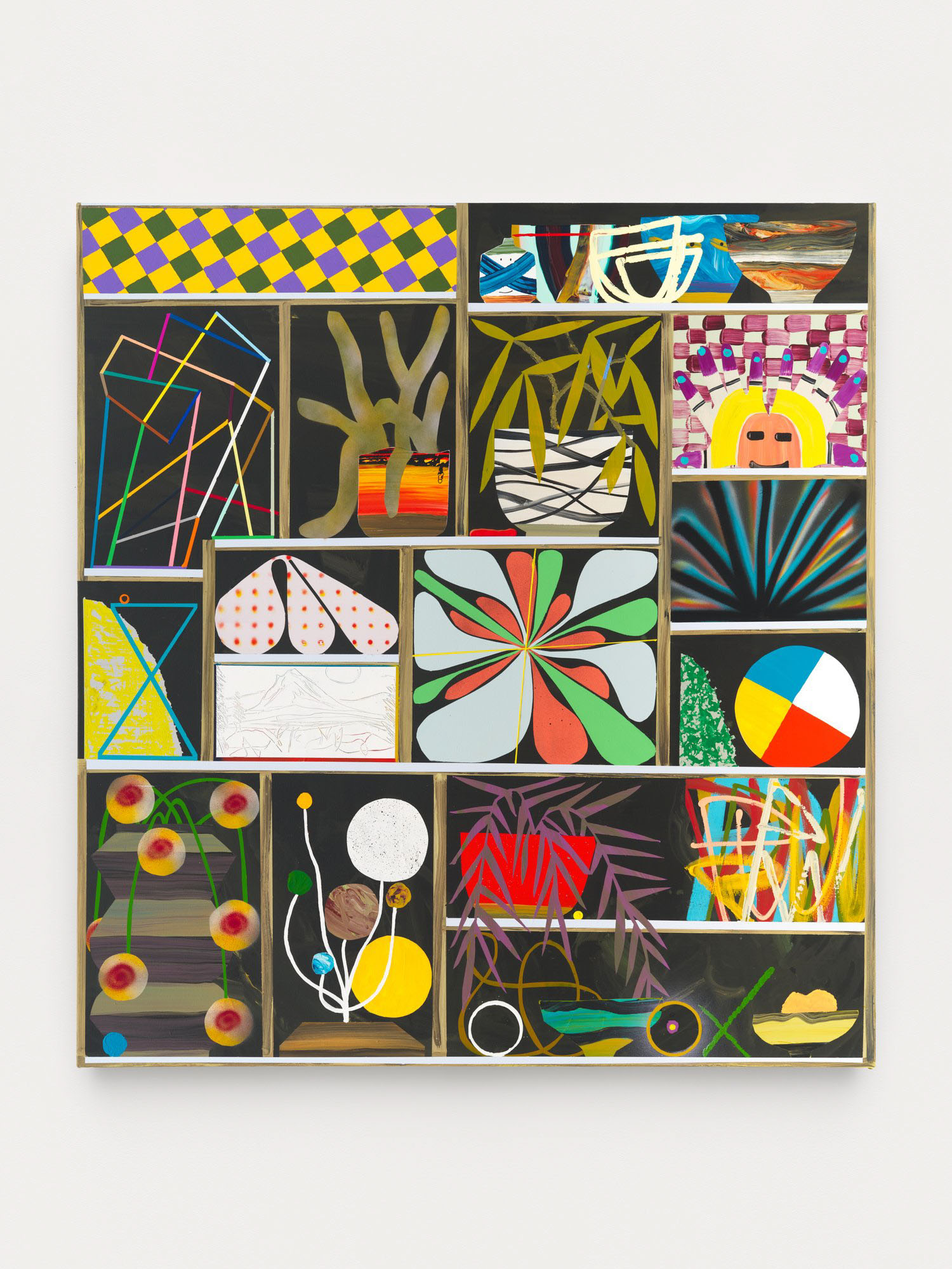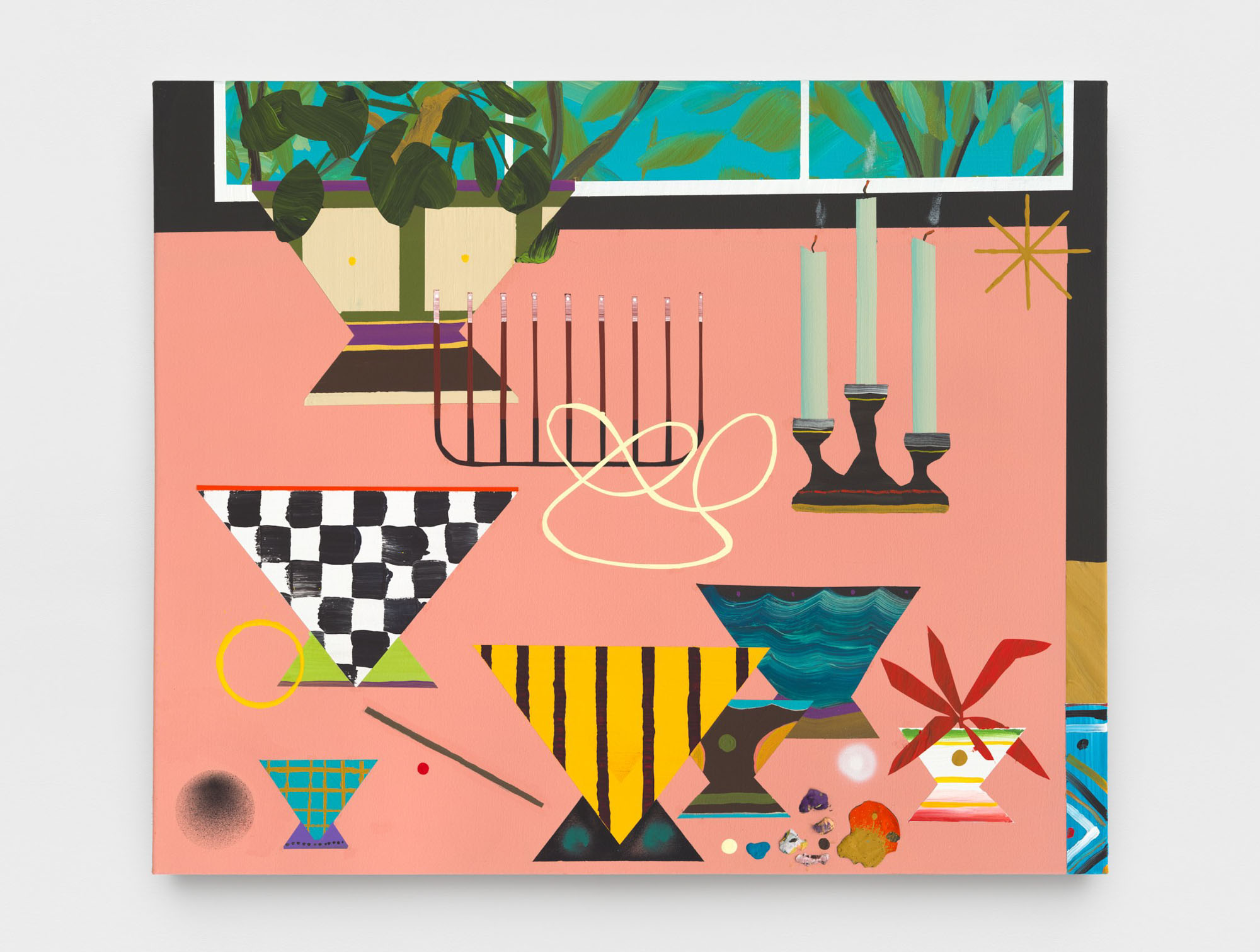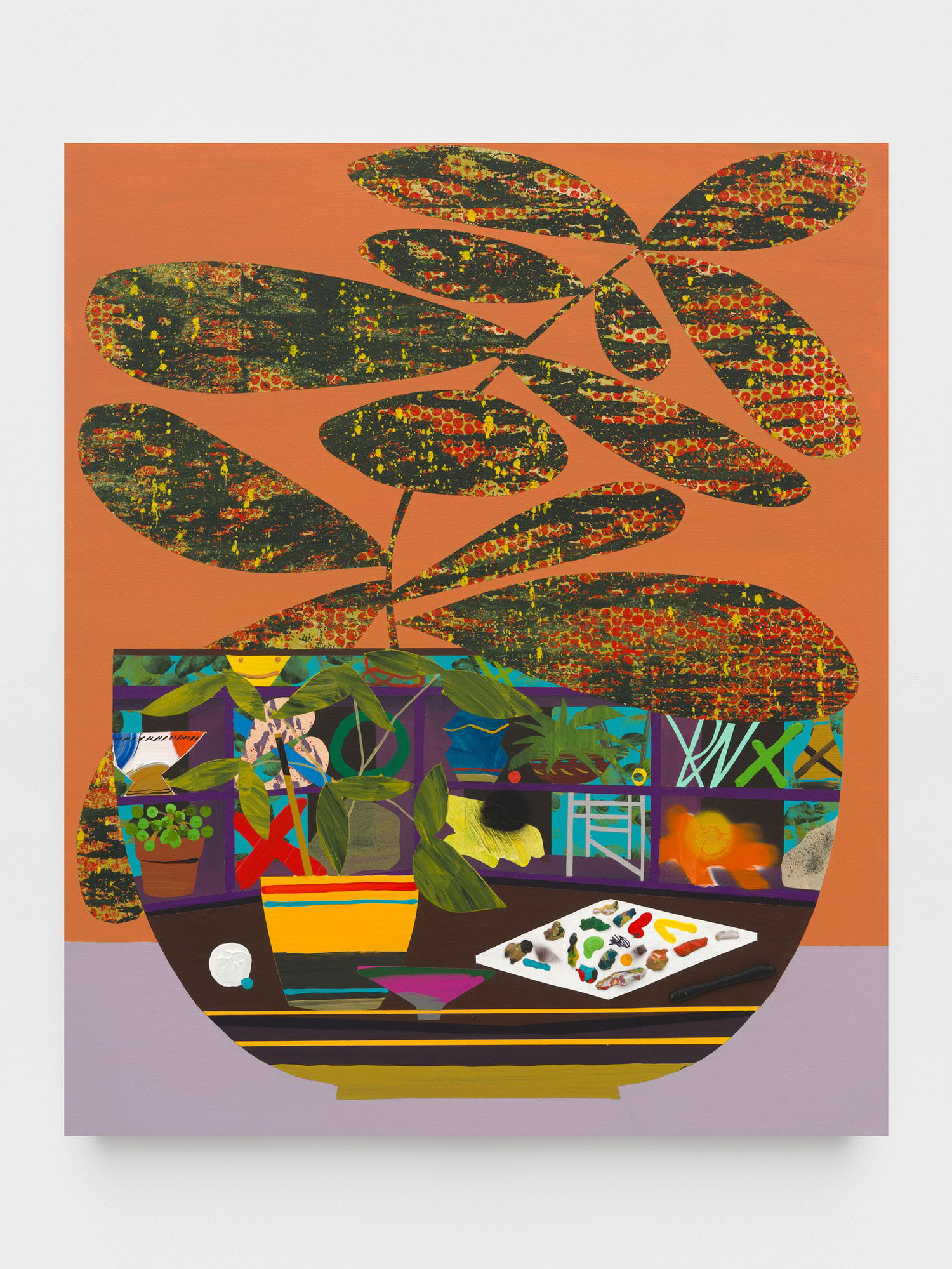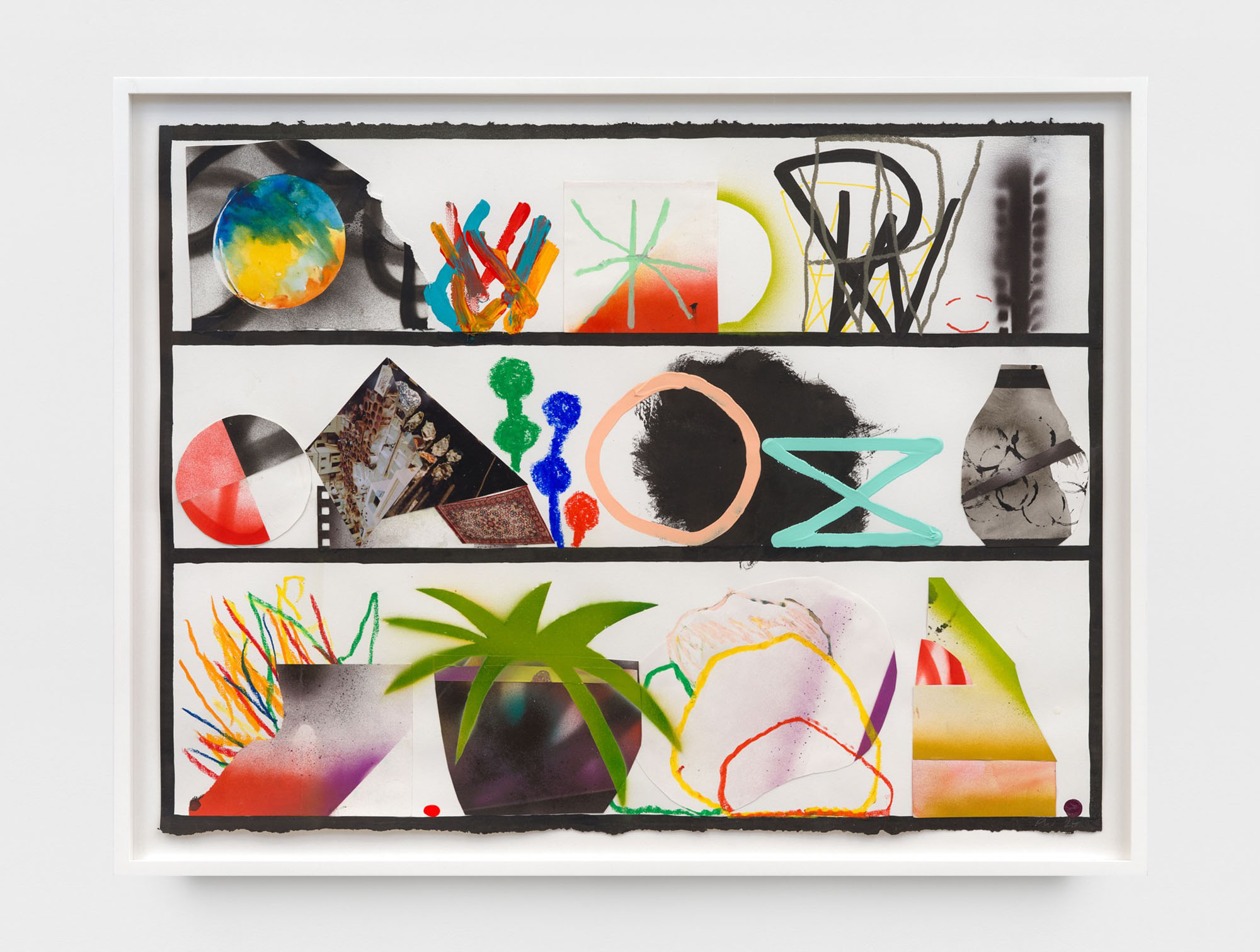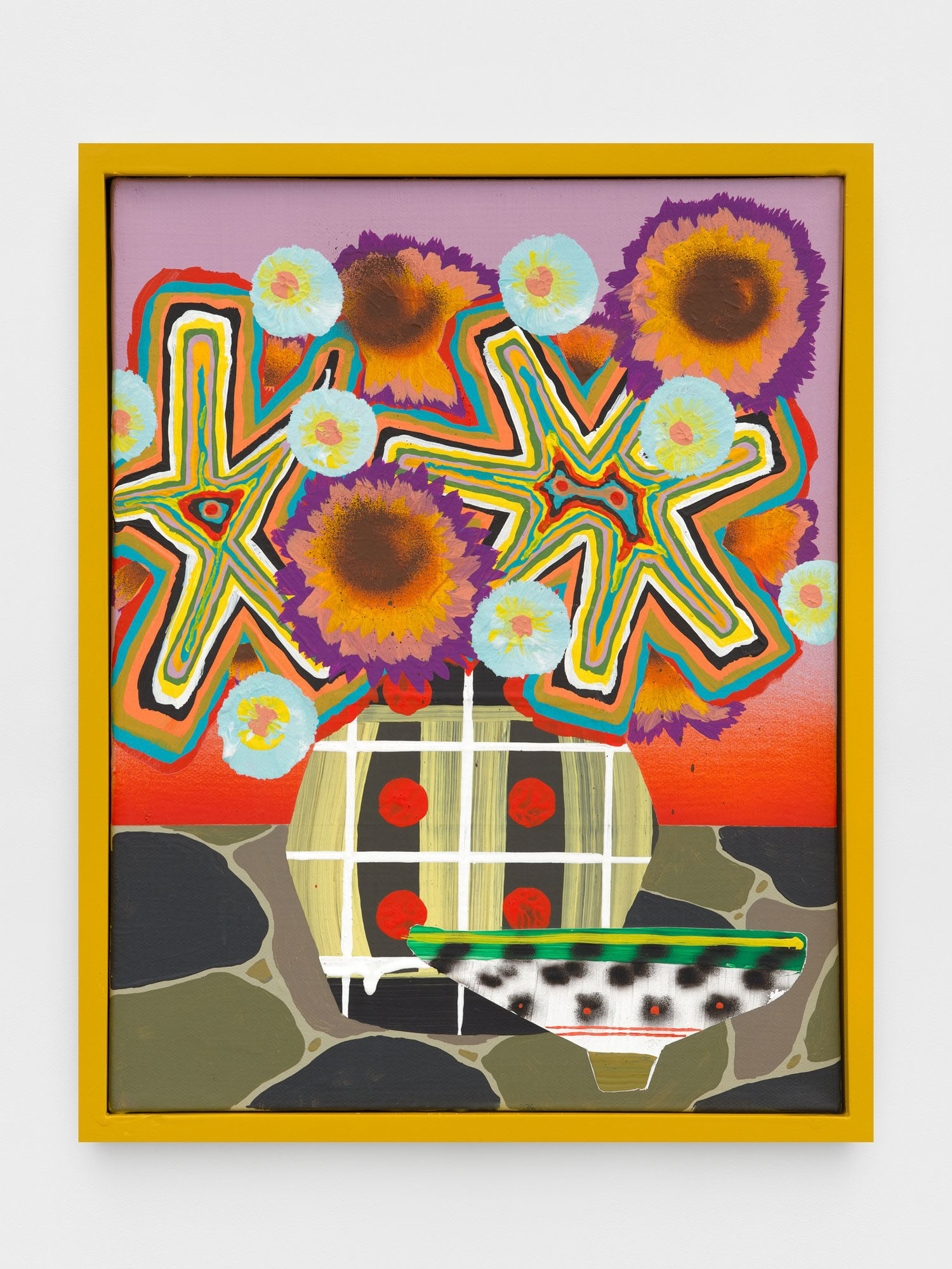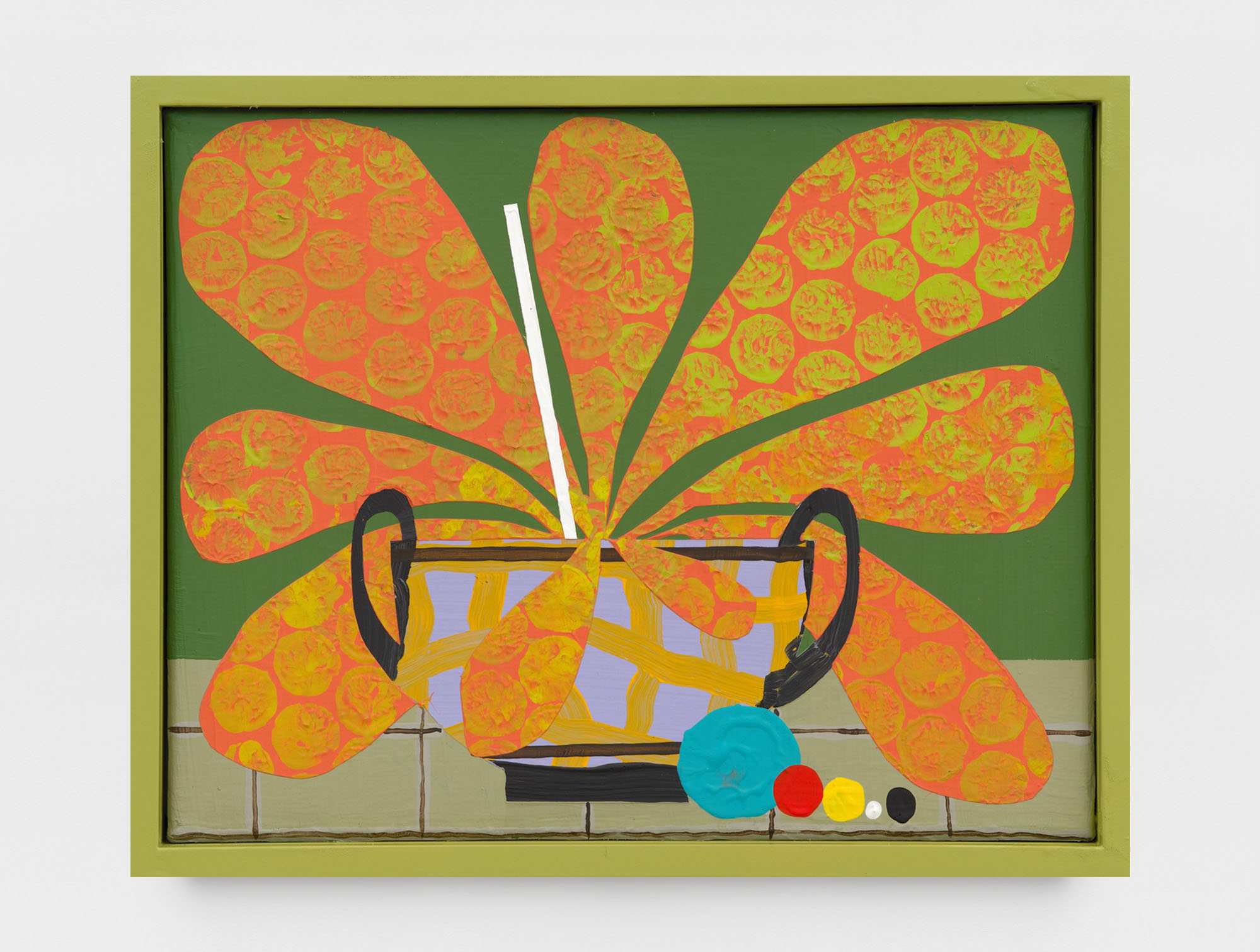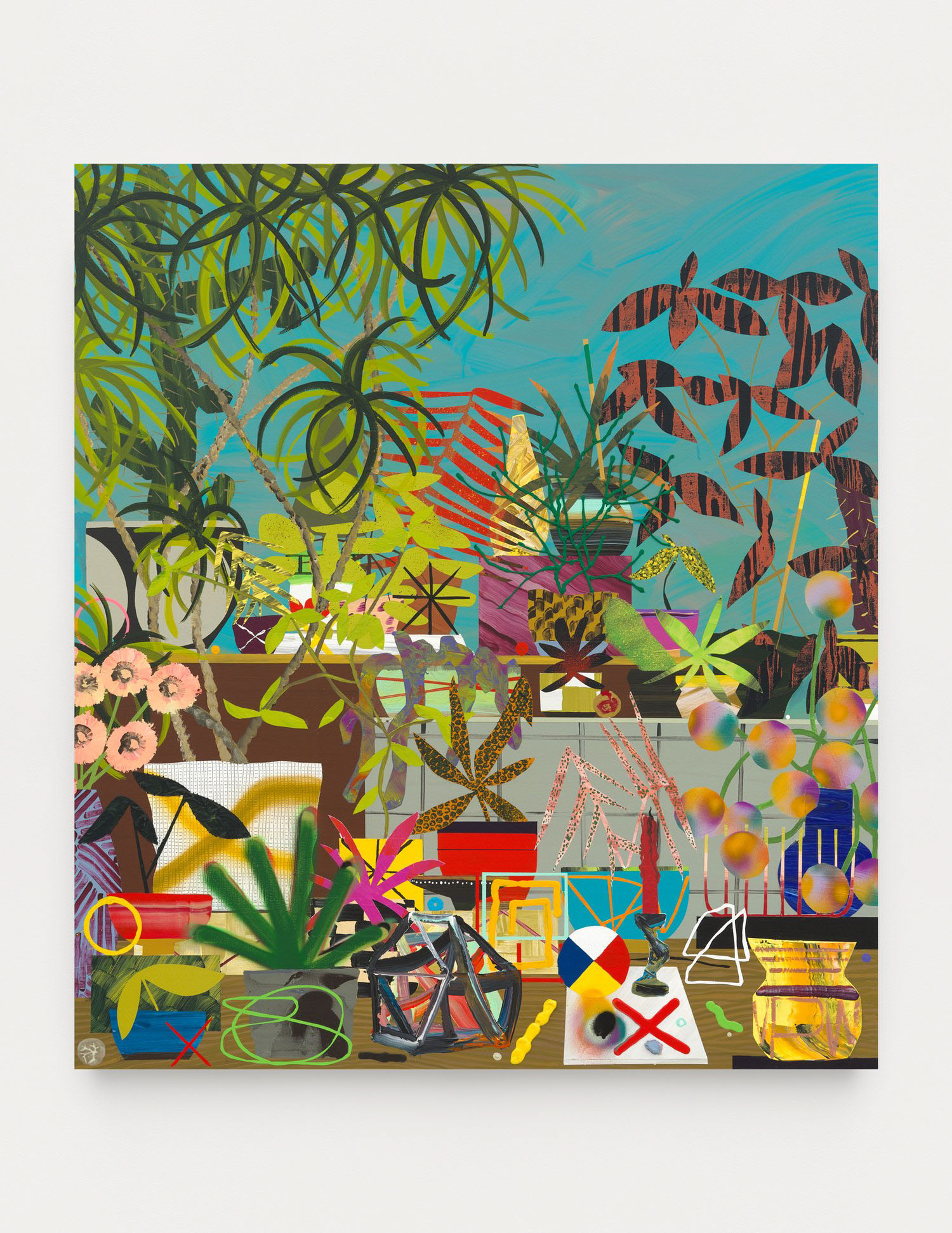A spur-of-the-moment excursion, a day trip involves little planning but much possibility. Bracketed between morning and night, the outing is brief, but a diversion from routine nonetheless—one in which the tripper sets aside real time for awareness, curiosity, and chance, even close to home.
The paintings in Day Tripper at Soco Gallery both capture and invite a sense of the traveler’s refreshed attention. In Paul Wackers’ vision, familiar objects are wildly reimagined through heightened color, varying textures, and a mélange of forms. The resulting compositions vibrate with organic energy, even when their subjects are static. In “Troubles at the bodega: options and wants,” vessels and houseplants sit beside painterly abstractions and hallucinatory images, emphasizing the title’s distinction between what’s available—the stuff of the concrete world—and what’s desired—the bodega’s impossible, imagined offerings.
Wackers has long shown an interest in forgoing the human figure in favor of “things,” remarking, “Once you put a person into a painting—that becomes the subject. I don’t want to do that. I like to set the stage.” By depicting settings whose human counterparts have left the building, Wackers continues the project of still life painting, in which the accouterments of daily living become symbols and ciphers for a range of ideas, emotions, and perceptive states.
The captured states on display range from the naturalistic to the altered, often within a single work, as in Wackers’ striking red monochromes and playful approach to perspective. A flattened tabletop seen from above contains forms rendered in profile, skewing the work’s spatial logic and puzzling our vantage as viewers. In Wackers’ words, these tabletops double as “maps or even board games; spaces in which actions can take place.” In “Trip Planning,” art objects and other décor direct the eye through a choose-your-own compositional adventure, wherein a bold black line enlivens the scene with suggested movement. Considered in the context of physical action, to “trip” also means to stumble; to lose one’s footing on a hidden obstacle. As in painting itself, “Trip Planning” implies that, even when following a map, only so much can be plotted beforehand.
To the sensorily-attuned day tripper, a shelf of trinkets becomes a museum in miniature; a floral arrangement a phantasmagoric display. In paying equal attention to the micro and the macro, the real and the dreamt, Day Tripper serves as a vibrant reminder of the visual feast we live inside, if only we choose to see it.

